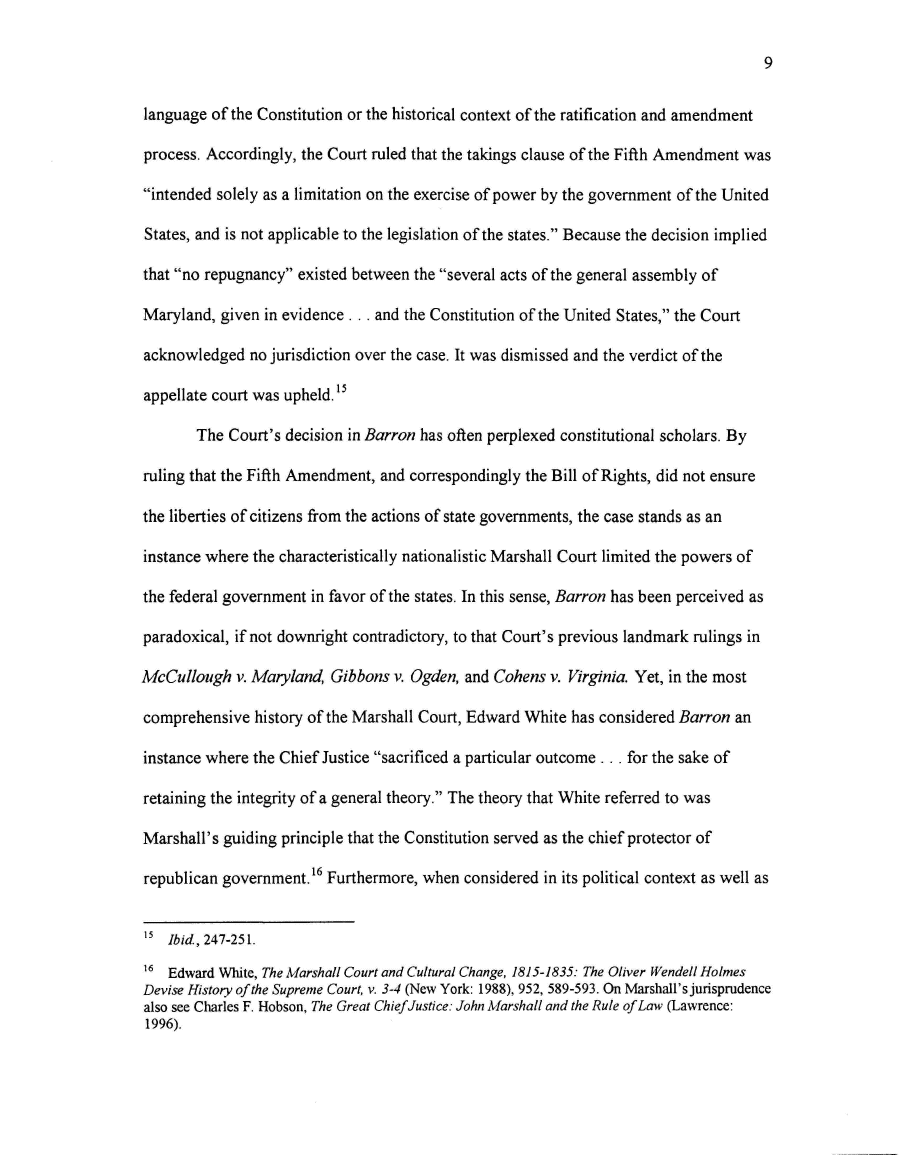|
language of the Constitution or the historical context of the ratification and amendment
process. Accordingly, the Court ruled that the takings clause of the Fifth Amendment was
"intended solely as a limitation on the exercise of power by the government of the United
States, and is not applicable to the legislation of the states." Because the decision implied
that "no repugnancy" existed between the "several acts of the general assembly of
Maryland, given in evidence . . . and the Constitution of the United States," the Court
acknowledged no jurisdiction over the case. It was dismissed and the verdict of the
appellate court was upheld.15
The Court's decision in Barron has often perplexed constitutional scholars. By
ruling that the Fifth Amendment, and correspondingly the Bill of Rights, did not ensure
the liberties of citizens from the actions of state governments, the case stands as an
instance where the characteristically nationalistic Marshall Court limited the powers of
the federal government in favor of the states. In this sense, Barron has been perceived as
paradoxical, if not downright contradictory, to that Court's previous landmark rulings in
McCullough v. Maryland, Gibbons v. Ogden, and Cohens v. Virginia. Yet, in the most
comprehensive history of the Marshall Court, Edward White has considered Barron an
instance where the Chief Justice "sacrificed a particular outcome ... for the sake of
retaining the integrity of a general theory." The theory that White referred to was
Marshall's guiding principle that the Constitution served as the chief protector of
republican government.16 Furthermore, when considered in its political context as well as
15
Ibid, 247-251.
16 Edward White, The Marshall Court and Cultural Change, 1815-1835: The Oliver Wendell Holmes
Devise History of the Supreme Court, v. 3-4 (New York: 1988), 952, 589-593. On Marshall's jurisprudence
also see Charles F. Hobson, The Great Chief Justice: John Marshall and the Rule of Law (Lawrence:
1996).
|

